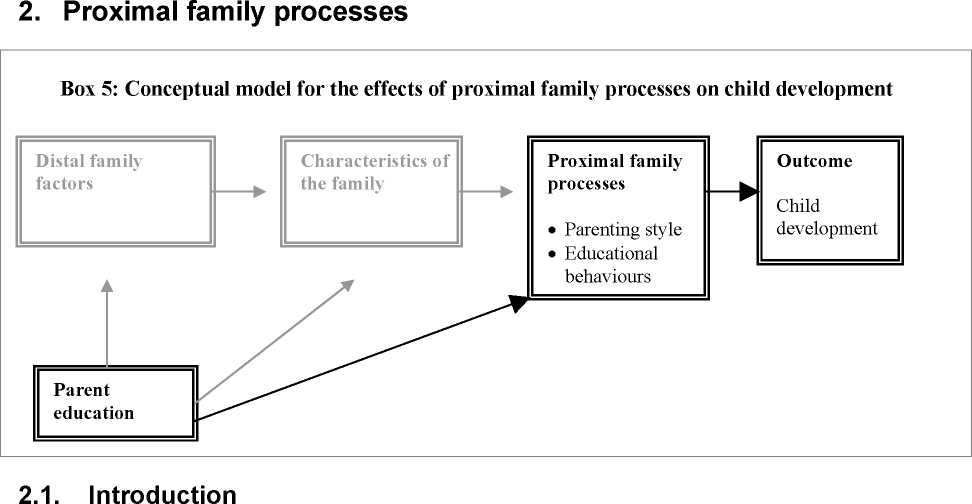Proximal family processes

In this section we examine key proximal family processes that influence our final
outcomes. Proximal family processes in this instance are defined as elements of the
interactive parent-child relationship. For each aspect of family process we assess from
theory and evidence the strength of the link:
i. from the family process to child development;
ii. from prior parental education to the family process.
There is a large body of literature on family process factors in terms of parent-child
interaction with many different elements of this relationship put forward as influences
on child development. We adopt a simple, twofold classification of types of parent-
child interactions as follows:
i. parenting style;
ii. educational behaviours.
Parenting style encompasses elements that are sometimes treated separately such as
warmth, discipline and intrusiveness. In some contexts this separation is useful as it
may be, for example, that parental education impacts on discipline but not on parental
warmth. However, since development benefits from the integration of these elements
it seems useful to treat them jointly here. Warmth with discipline provides a
developmentally enhancing structure, one without the other less so.
Educational behaviours are clearly influenced by parenting style but we distinguish
them as separate because they are specific behaviours rather than part of parent-child
interaction more generally. Educational behaviours include reading to children and
the provision of and engagement in a cognitively stimulating environment. These
have been consistently associated with children’s development.
21
More intriguing information
1. Momentum in Australian Stock Returns: An Update2. Methods for the thematic synthesis of qualitative research in systematic reviews
3. The name is absent
4. The name is absent
5. Non-farm businesses local economic integration level: the case of six Portuguese small and medium-sized Markettowns• - a sector approach
6. Second Order Filter Distribution Approximations for Financial Time Series with Extreme Outlier
7. Großhandel: Steigende Umsätze und schwungvolle Investitionsdynamik
8. The name is absent
9. The name is absent
10. Tobacco and Alcohol: Complements or Substitutes? - A Statistical Guinea Pig Approach